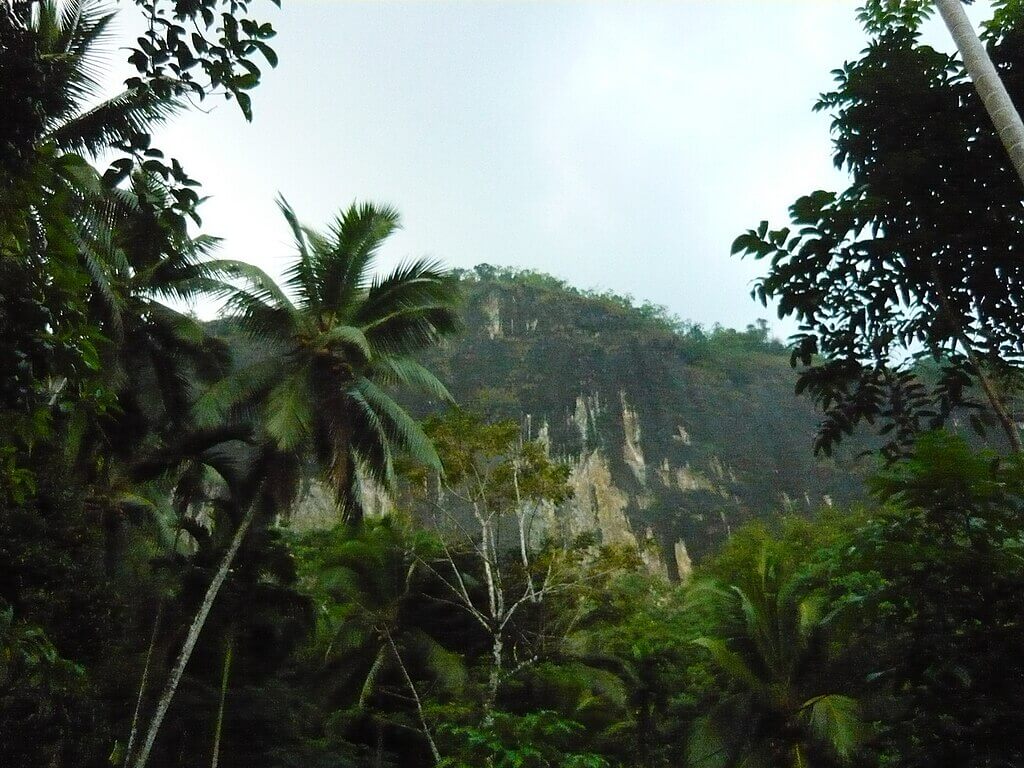Fa Hien Caves: Touch 48,000 Years of History

Pahiyangala” by Rapa123, via Wikimedia Commons, licensed under CC BY-SA 3.0.
Step Back 48,000 Years
Imagine stepping out of the bright, tropical sun and into the cool, vast shadow of a cave. The air is still. A massive, golden Buddha statue rests peacefully in the dim light. But this is not just another beautiful temple. The ground beneath your feet is a history book, and its story goes back… way back.
Welcome to Fa Hien Caves, also known as Pahiyangala. This isn’t just a place of legend; it’s one of the most important prehistoric sites in all of Asia. This enormous cavern was a home to Homo sapiens—your distant ancestors—nearly 48,000 years ago.
When you stand here, you are standing in the exact spot where archaeologists uncovered the “Balangoda Man,” the remains of Sri Lanka’s earliest known inhabitants. It’s a place that feels ancient, powerful, and incredibly human.
Your Guide to a Journey Through Time
This guide is for you, the history lover, who wants to see more than just the postcard sights. Here’s how to plan your visit to this profound piece of human history.
The Story: A Tale of Two Histories
This cave has two amazing stories.
- The “Recent” History (A Past Traveler): The cave gets its popular name from a famous traveler, a Chinese Buddhist monk named Faxian (Fa-Hien). In the 5th century AD, he was on an epic 12-year journey to India and Sri Lanka to find sacred Buddhist texts. Legend says he rested in this very cave during his travels. Imagine him, 1,600 years ago, arriving on foot after a long trek, finding shelter in this same magnificent space.
- The Deep History (The Hidden Story): For history lovers, this is the real treasure. In the 1980s, archaeologists began digging here. They didn’t just find old pots. They found the 48,000-year-old fossilized skeletons of men, women, and children. They also found stone tools and the remains of the animals they ate. This discovery was huge! It proved that modern humans lived in South Asian rainforests much earlier than anyone had thought.
Best Time to Visit
The cave is located in Sri Lanka’s “wet zone,” which means it gets a lot of rain!
- Best Window: The driest and most pleasant time to go is from January to April. The skies are clearer, the jungle is green, and the (many) steps up to the cave are not as slippery.
- Rainy Seasons: Sri Lanka has two monsoons. The heaviest rain here is usually from May to September. While the cave itself is dry (it’s a cave, after all!), a downpour can make the climb muddy and the jungle roads tricky.
- Time of Day: Go in the morning. It’s much cooler for the climb, and the soft morning light filtering into the massive cave entrance is something you won’t forget.
What to Do When You’re There
- The Climb: Be prepared! To reach the cave, you have to climb a long flight of concrete steps (around 400-500). Take it slow, bring water, and enjoy the jungle sounds as you go up.
- Marvel at the Entrance: The first thing you’ll notice is the size. The mouth of the cave is gigantic—one of the largest in Asia. It’s wide enough to fit a small cathedral inside.
- Visit the Temple: A modern Buddhist temple is built right into the cave. You’ll see the huge, 40-foot-long reclining Buddha statue. Remember, this is an active place of worship.
- See the Dig Site: For you, this is the main event. There is a small, protected archaeological area. This is the spot where the ancient skeletons were found. It’s a simple display, but knowing you’re looking at a 48,000-year-old home is a truly humbling feeling.
- Talk to the Monks: The resident monks are the guardians of this history. If they are not busy, you can (respectfully) ask them about the cave.
Getting Around
Fa Hien Cave is off the main tourist trail, so getting there is part of the adventure. It’s located near the town of Bulathsinhala in the Kalutara District.
- Comfort Option (Recommended): Hire a car and driver for the day from Colombo, Kalutara, or another nearby coastal town. This is the easiest and most flexible way. The driver will wait for you while you explore.
- Budget Option: You can take a local bus to Bulathsinhala town. From the bus station, you will need to hire a tuk-tuk for the last few kilometers to the cave entrance. Make sure to negotiate the price (for the round trip, including waiting time) before you get in.
Travel Tips for a Respectful Visit
- Dress Modestly: This is a sacred temple. Both men and women must cover their shoulders and knees. A sarong or scarf is perfect to wrap around your waist or shoulders.
- Shoes Off: You must remove your shoes and any hats before you enter the main cave and temple area. It’s best to wear shoes that are easy to slip on and off.
- Be Quiet and Respectful: People come here to pray. Keep your voice low.
- Ask to Take Photos: It’s polite to ask for permission before taking photos of the monks or of people who are worshiping.
- Bring Water: The climb is hot and humid. You will be glad you have it. A small donation to the temple is always appreciated.
Your Footprint in History
Fa Hien Cave might not have the golden gleam of the Temple of the Tooth or the dramatic views of Sigiriya, but it offers something deeper. It’s a rare, quiet place where you can stand and feel a direct connection to the very dawn of humanity on this beautiful island.